Atlantic Monthly Contributors's Blog, page 377
August 4, 2015
Missing In Action

Over the past decade, a string of war movies emerged in the wake of 9/11: The Hurt Locker, Syriana, The Messenger, Green Zone, Lone Survivor, and American Sniper, to name just a few. Some have performed better than others at the box office, and many have received critical acclaim. Almost none has included portrayals of women in combat.
Related Story
For the last two years I reported on a team of women soldiers recruited by special operations in 2011 to serve on combat missions alongside Army Rangers and Navy SEALs, among other special operations teams, all while the combat ban on women remained in place. When I would tell friends I was working on a story about a “band of sisters” on the front lines—women connected forever by what they saw and did at war and by the fact that America had no idea they did it—they would ask me if the story was about rape or PTSD.
Neither, I would answer. The story was about valor.
I realized by the third time I heard the question that it kept resurfacing in part because the victim narrative has overtaken all others in recent years when it comes to the story of women in uniform. There have been precious few depictions of women in uniform doing their actual jobs, most noticeably when it comes to the movies. Among the recent spate of war films, hardly any women are seen as service members central to the action. In Afghanistan, women in uniform are widely seen in the airports and across bases heading to work. But watch a war movie and the roughly 300,000 women who have deployed in America’s post-9/11 wars are largely missing in action.
These untold stories have consequences both for how America sees its women in uniform and how they see themselves: With women mostly absent from our war stories, Americans find it hard to understand the combat their servicewomen have seen. And the women themselves are loath to explain their experience to a nation that already struggles to connect with the less than one percent of the country that has fought its wars.
Historically, war films have offered snapshots of how people have perceived the military in different eras, as well as a path to reckoning with what we ask of our young men in uniform. “There haven’t been that many post-9/11 war movies, let alone good ones, and most of those have focused on parts of the military that are almost exclusively male,” says Phil Carter, an Iraq war veteran and the director of the Military, Veterans, and Society Program at the Center for a New American Security.
Carter points specifically to the special operations stories Lone Survivor and American Sniper, both of which did big business at the box office. Particularly in the wake of the successful raid on the Osama bin Laden compound in 2011, Navy SEAL stories have captured the American imagination. As of today women still remain barred from becoming SEALs and Army Rangers in their own right, which explains much of why they are absent from these stories. Still, they’ve played important roles in the special operations community for years, including serving as the Explosive Ordnance Disposal Technicians featured in The Hurt Locker.
The victim narrative has overtaken all others in recent years when it comes to the story of women in uniform.While women have been going to war in greater numbers than ever before in the decades since 9/11, their stories have yet to catch up with their service. Two female servicemembers have received the Silver Star. More have received the Bronze Star Medal, along with Purple Hearts and countless Combat Action Badges. Women have broken ground as pilots, military police, intelligence officers and, to a lesser-known extent, inside elite special operations units—all on the front lines and primarily while they were officially banned from ground combat.
But on the big screen, there’s a decided absence of valor when it comes to women in uniform. This has implications because it means the hero war story—and the antihero war story—doesn’t include women.
“In the majority of both movies and TV shows there’s a real dearth of military women, and when they do exist they’re often portrayed as victims of sexual assault,” says the Iraq veteran and author Kayla Williams. “That definitely contributed to my feelings of isolation and alienation when I came home. Not seeing myself represented alongside the people I served with added to civilians not understanding that women are there, because they are responding in large part to the portrayals they see in pop culture. When they don’t see any women, it makes it easy to assume we’re not there or that we play these really limited roles.”
How do you have a homecoming or approach to offer a “thank you for your service” to someone whose deployment isn’t acknowledged or observed, let alone celebrated? Or as the novelist and author Cara Hoffman wrote in 2013 in The New York Times, “I can’t help but think women soldiers would be afforded the respect they deserve if their experiences were reflected in literature, film and art—if people could see their struggles, their resilience, their grief represented.”
This isn’t to say that women are absent from all portrayals of films focused on the War on Terror and America’s role in fighting al-Qaeda. In both Zero Dark Thirty, which chronicles the hunt for Osama bin Laden and is best known for the controversy regarding the veracity of the torture scenes included, and Fair Game, the story of the outed former CIA agent Valerie Plame and her fight to regain her name and reputation after her occupation was exposed, women were the primary characters. Those films showed the women who served at the center of America’s battle against terrorism in ways that illuminated the complexity of their work. And both contributed to the popularization of the “female CIA analyst/agent” narratives that remain very much a part of today’s media moment. Both were based on true stories.
Yet for the most memorable portrayals of women in action, wearing a uniform for her nation in wartime, you have to go back to the 1990s, and to fiction.
In Starship Troopers, Denise Richards plays a pilot in a world where women serve in the Mobile Infantry, train, deploy—and hit the showers—alongside men. In Courage Under Fire, Meg Ryan plays a rescue helicopter pilot killed in Iraq. The central question of the film is whether or not she should posthumously receive the Medal of Honor. In G.I. Jane, Demi Moore plays an intelligence officer who refuses to quit after she’s given a shot at becoming a Navy SEAL.
Perhaps it was because these movies were made at a relatively peaceful moment in America’s pre-9/11 history that they feature women. They also could dance around the pressing questions of women in combat without having to wrestle with real life-and-death situations and the issue of how, exactly, America feels about having women on the front lines. But whether culture has caught up or not, women already are fighting America’s wars.
“Reality has outpaced perception in terms of what people think that women are out there doing,” says Janine Davidson, a former Pentagon official, Air Force veteran, and one of the first women to fly C-130s. “Movies are what I think will help the American people and the audience to be able to really recognize and understand what women bring to the fight and that women can do this.” Davidson says that more war stories on the big screen featuring the real-life feats of women—and men—on the battlefield would help show America that women have been at war and seeing combat first-hand for years. They would also help those women after they return home.
“One of the things I’ve started to ponder is whether women’s reluctance to self-identify as veterans is partly linked to this absence,” Williams says. Across America, veterans’ service providers and non-profits seeking to offer services to female veterans say that they have to ask women specifically whether they’ve served because so few volunteer the information. One North Carolina non-profit actually began asking its clients directly whether they’d ever been part of the military because so few had self-identified as veterans.
How we see women in uniform matters both to them and to us. At a time when so few Americans serve, movies often offer people’s only exposure to combat, shaping the way they see who fights the nation’s battles. “For the American public, these movies are the reality of war,” Carter says. “Most Americans didn’t go to Vietnam—their Vietnam was Platoon and Full Metal Jacket and Apocalypse Now. And more than 99 percent of Americans did not go to Iraq and Afghanistan, so their reality is Zero Dark Thirty and American Sniper.”
At a time when so few Americans serve, movies often comprise the only exposure many get to combat, and shape the way we see who fights the nation’s battles.It’s possible a shift is on the horizon. In the wake of American Sniper’s box-office success and the fact that unconventional women-driven films are on the rise (as evidenced by the success of Spy and Mad Max: Fury Road) there seems to be an increasing appetite for fictional stories in which women are heroes. Now comes the test of whether they can be real-life heroes as well.
Since March, three books about women in war have been picked up by Hollywood. TriStar pictures purchased the film rights to Shoot Like a Girl: How One Woman’s War Against the Taliban Led to Her Victory Over the Department of Defense, an upcoming memoir by Air Force Major Mary Jennings Hegar. Warner Brothers bought the war photographer Lynsey Addario's memoir It’s What I Do: A Photographer’s Life of Love and War. And Fox 2000 won the rights to Ashley’s War, the book I had the privilege of writing about a team of women recruited to serve alongside Army Rangers, Navy SEALs, and other special operations units on combat missions in 2011.
As Adam Green wrote in the May issue of Vogue about Grounded, a play starring Anne Hathaway as a drone pilot, “Females in the line of fire now seem to be having a moment.” Of course, how Hollywood depicts women on the battlefield will be as important as the question of whether they are seen at all.
“Whether the upcoming movies featuring women in war will broaden the public's perception has everything to do with how those women are portrayed,” says Helen Benedict, the author of two book about women and war and a professor at Columbia University. “If these films push women into the stereotypes of the past—women who wimp out and need rescuing or who are nothing but a [love] interest—that won't help at all.”
But if these real-life warriors receive three-dimensional treatment, perhaps a new spate of war stories could help pry open the American definition of the hero to include more women—both fictional and real.
“It will make the biggest difference to young men and women who look to the movies for inspiration,” Carter says. “My daughter will grow up seeing these stories and hearing these stories from me and my wife, and know that she can do anything she wants.”









How Writers Can Find Meaning in Nonsense
 Doug McLean
Doug McLean When I spoke to Jesse Ball, the author of A Cure for Suicide, he forged into the dense, alliterative groves of Lewis Carroll’s “Jabberwocky.” Carroll’s poem famously relies on a strange, idiosyncratic language—but, Ball argues, it’s far from meaningless.
Related Story
In our conversation for this series, Ball described the process by which nonsense verse—when done well—achieves powerful emotional effects, while at the same time deflecting “objective” or intellectualized interpretations. More broadly, the poem illustrates the kind of literature Ball likes best: driven by sound, urgently communicative, and yet able to sustain a range of private meanings.
A Cure for Suicide, Ball’s fifth book, begins without providing any context: we’re plunked down in a tiny, unnamed town, as a woman teaches an male amnesiac how to be human again. At first the lessons are basic and literal—this is how a chair is used, here is how to greet a stranger—but they grow in difficulty and complexity. Slowly, as the man gains confidence, and his past starts to materialize—as does the a vision of a society that flees from hurt, numbing the tormented in order to save them.
Jesse Ball’s other novels include Samedi the Deafness and Silence Once Begun. He’s won the Paris Review’s Plimpton Prize and his been a finalist for the Los Angeles Times Book Prize. He teaches in the Art Institute of Chicago’s MFA in Writing program, and he spoke to me by phone.
Jesse Ball: When I was a child, my father would read out loud to my brother, my mother, and me. Several times in the course of my childhood, he would read Alice and Wonderland and Through the Looking Glass over a few weeks. They were a great favorite with all of us.
We had a very tight-knit little family, and we lived on the outskirts of a Long Island town by these train tracks. My brother and I would run around in the woods all day, and when my father came home it was always a big event. We were pretty poor, and my mother always tried to turn little things into big events—so my father coming home from work would be a big thing. As we ran out of the woods to meet him, he’d come up and would always say:
And hast thou slain the Jabberwock? Come to my arms, my beamish boy!
This was very exciting for my brother and me. I don't think I thought I was a “beamish boy” per se, but I certainly liked to think I'd been out slaying jabberwocks in the woods.
I had a lot of trouble in school to begin with. I got left back in kindergarten, and I was in special education. My teachers didn't have very much faith in me. At one point, there was a psychological evaluation—which I actually saw about a year ago, when we were going through boxes at my mom's house. It was a very lengthy test, and it scored all my different attributes and proclivities and possibilities. I scored very low indeed. In fact, the assessment was that potentially I had some kind of cerebral damage, which—well, luckily, if it's true, I've managed to carry on all this time.
But there was one attribute that I scored extremely high on, in fact, exceeded all adult levels for: the repeating of long, nonsensical phrases. I guess I was not only above my age group but above all possible results on the test. That was very notable for me looking at this now, because nonsense has been at the heart at my lifelong, ridiculous endeavor.
There’s a misunderstanding about what nonsensical things are—the idea that they're just funny, and that's the beginning and the end of it. Nonsense is not “not sense”—it operates at the edge of sense. It teems with sense—at the same time, it resists any kind of universal understanding.
I believe Carroll first wrote “Jabberwocky” as a stanza of Anglo-Saxon poetry. (Nonsense tends to play off and puncture some known landscape.) Here, he's playing off the language of all these wonderful things from The Canterbury Tales to The Pearl to one of my personal favorites, Sir Gawain and the Green Knight. As well as older texts like the Exeter Book riddles. He’s tapping into those wonderfully alliterative verses, that rich history of sound, within the Old English and Middle English traditions. What comes out is this:
‘Twas brillig, and the slithy toves
Did gyre and gimble in the wabe:
All mimsy were the borogoves,
And the mome raths outgrabe.
It’s not in favor of some other sensical thing that could be said. In fact, it's very precise. You couldn't supply another object that would do a better job of what it's doing in its place. The poem preserves a truth Carroll feels within himself of the sounds of those Anglo-Saxon words, their color and direction.
There’s a question of what master are you serving when you write something. If you want to tell someone that they have to go unplug the toilet, that's a very specific sentiment: Go, and unplug the toilet. It can succeed, or not. But what if the master you want to serve is to somehow communicate the entirety of your experience of Anglo-Saxon poetry, in a single poem? That’s when something like nonsense comes into its own. The wonder of it is not that it makes something out of nothing, or that it is without sense—but actually that it’s exploding with sense. It's not for when you have nothing to say, but when you have many things to say at once.
Nonsense is not “not sense”—it operates at the edge of sense.At the same time the poem provides this very specific insight about the sound and of Anglo-Saxon poetry, it also evades clear interpretation. Many times, when someone writes something, they hope for some precision of communication—they want to provide some precise statement that exists in one mind, and make it exist in your mind. But I think Carroll’s understanding of communication was more interesting than that. He understands that the text that you create is an object that collides with the mind with the reader—and that some third thing, which is completely unknowable, is made. He was completely content with that, and that contentment allows him to make this object “Jabberwocky” as interesting and beautiful and lovely as an object as it can be. The poem’s construction allows you to be sent somewhere along the vector of “Jabberwocky,” though no one but you can say just where.
But this experience requires trust. That’s why the poem veers between sense and nonsense: With the heroic tale of this hero who goes out to do battle with a wonderful creature, Carroll gives us some solid ground to stand on. That’s sufficient to give the reader a confidence and sureness of interpretation of what things mean. It works because you’ve developed an enormous trust that you're in the most immaculate hands with Carroll. He's such a logician, a lover of games, and an extremely—probably even exhaustingly—exacting person. Then, when he decides to be nonsensical, you give him the entirety of your being because he's earned that trust completely.
The crucial thing in any work of any kind is that it must be a gift—the reader must possess it even more than the person who wrote it. It must be given completely. “Jabberwocky” is given in this way, so that you can feel assured that joining of your internal world to it is not an error. You should have no fear you have made an error. It's your poem, that’s the important thing.
The crucial thing in any work of any kind is that it must be a gift—the reader must possess it even more than the person who wrote it.When I write, it isn’t so important to me that the page itself be beautiful to look at or somehow unimpeachable. It's simply that it gestures in the right direction, such that something happens within the mind of the reader. In the other direction, unfortunately, it’s possible to create page after page of beautiful perfect-looking prose that is kind of tepid. It's hard to say anything against it because it all figures out perfectly. You look through it, and it’s all there, it’s all correct, whatever. But something that is ragged and strange-looking might in fact be completely practical and efficacious as writing, because it causes the explosion that’s necessary in the mind.
For me, a central principle of writing comes from Daniil Kharms, who said:
A poem, if thrown at a pane of glass, should break the glass.
The effect is the crucial thing. That’s the approach I try to take: not to be vain with the success of the writing as writing, but rather its effect.
This is a practicality of means, based upon the immense shortness of time that we have. Imagine I said to you, “Your grandmother is going to die in five minutes. You have to go in and just tell her something wonderful: She wants to hear a beautiful thing.” You’re not going to try to create a prose object that can be judged by some committee of your peers, something perfectly in harmony and well-balanced and wry and witty and correct. Or something someone writing an essay in The New Yorker would pronounce a good work. You’re just going to—within the language that’s shared between your grandmother and yourself—attempt to burst all bounds and create a resonance. That resonance is your only aim. Anything that is not the resonance, you discard. That’s the real work.
In this, thinking about words as sound is essential. When you read, after all, you hear the words in your head. Sound provides a good test for what is artificial and geriatric about written language, and what is essential and real. If you read some work and much of what is there is lost to the listener, then it may be it’s necessary to have as a buttress of all these tablets of culture to decipher what is meant. But there’s no excuse to say a person needs to read 50 other books in order to appreciate this one. A work must contain all of its tools, and sound gives us clues about what is necessary and real.
I think when I’m writing in the first place, when I really get going, I’m murmuring what I’m writing in a half-breath as I’m working. It’s probably embarrassing if I’m in some public place, sitting there ranting to myself. (Usually I try to sit far enough away from other people.) They say that after you write a work, and finally look at it, you can’t tell what’s there any more. How can you actually see the work in order to judge it? One way is to read it out loud—to somebody who you’re a little afraid of, whose opinion matters to you. When you read it aloud, there are parts you might skip over—you find yourself not wanting to speak them. Those are the weak parts. It’s hard to find them otherwise, just reading along. But you can judge the work more clearly when you hear and feel its sound.
My father’s use of “Jabberwocky” as a means of strengthening and celebrating this daily moment of his homecoming to my family—it was a wonderful way to use poetry. There’s no right way or wrong way to use literature. But to use sounds that are passed down, spoken and re-spoken to create beautiful moments of ritual: This is an excellent use of the poem. Maybe it’s something we all can strive for.









A Rare Red-State Accord for More Voter Access

Nearly a year ago, a coalition of voter-advocacy groups wrote a letter to Oklahoma’s top elections official to deliver a stark, but not uncommon, message: The state had failed to comply with federal law. Specifically, the groups charged, Oklahoma was not giving citizens receiving public assistance an opportunity to register to vote, which is a requirement of the 1993 National Voter Registration Act.
“We hope to work amicably with you to remedy Oklahoma’s non-compliance,” the advocates wrote. “However, we will pursue litigation if necessary.”
Such warnings are often a precursor to lawsuits, the kind of knock-down, drag-out legal fights that are filled with accusations of voter suppression and partisan chicanery. In North Carolina and Texas, the courts are weighing challenges to new voter-ID laws, and the Supreme Court recently delivered voter advocates a victory when it ruled that Arizona and Kansas could not require people to show proof of citizenship when they register to vote.
Related Story
Should Voter Registration Be Automatic?
Like those other states, Oklahoma is dominated by Republicans, producing a strong recipe for conflict with organizations, like Demos and the American Civil Liberties Union, that are often aligned with liberal causes. Yet to the surprise of the advocates, Oklahoma’s case never reached a courtroom.
Last week, the coalition and Oklahoma’s election board announced an agreement in which the state committed to asking any person who interacts with welfare agencies whether they want to register to vote and then to helping them through the process. That includes assistance with helping them register online. The state also agreed to establish a new website with information about the National Voter Registration Act.
The scope of the settlement is clearly modest when compared to the fights over voter ID laws, but Jenn Rolnick Borchetta, senior counsel for Demos, praised Oklahoma for agreeing to address what she said was “a disconcerting number of people who should have gotten voter-registration assistance and didn’t get it at all.” Demos and other organizations pursued the case based on statistics showing a disproportionately low number of low-income people who were registered in Oklahoma, which sparked an investigation.
“They were cooperative from the beginning,” Borchetta said of state officials. “We get different responses from different states, and you can’t predict the responses based on the color of the state. It’s often difficult. We often have to file lawsuits, and the fact that we didn’t have to file one here speaks itself volumes about Oklahoma’s willingness to do this.”
Bryan Dean, a spokesman for Oklahoma’s election board, said there was a consensus among the state’s top officials—including Governor Mary Fallin, a Republican—to work with the advocates rather than defend the challenge in court. “There was not a real reason to fight,” he said. “The key thing for us is this agreement isn’t asking us to do anything that goes beyond enforcement of the NVRA.”
“We take the enforcement of this very seriously,” he added. Dean also noted that the plan to which the state has committed “isn’t costing us money.”
“There was not a real reason to fight. The key thing for us is this agreement isn’t asking us to do anything that goes beyond enforcement of the NVRA.”The nationwide fight over access to the polls can be divided into two strains: efforts to expand access and make it easier for people to vote, and the battle against laws or policies ostensibly aimed at boosting the “integrity” of elections but which in practice are seen as limiting the vote. As a win for advocates of expanded access, the Oklahoma agreement represents “incremental steps,” said Myrna Pérez, director of the voting rights and elections project for New York University’s Brennan Center for Justice. “The Oklahoma case highlights that voter registration in this country leaves a lot to be desired,” Pérez said.
The more controversial efforts are in the 17 states that are considering legislation to enact some form of automatic voter registration, along with other changes that shift voter registration from a pen-and-paper platform to an online system. (Hillary Clinton gave a boost to this push by endorsing automatic, universal voter registration during a speech in June.) Oregon in March became the first state to enact a law to require the state to mail a ballot to any citizen with a driver’s license. Lawmakers in New Jersey passed a similar bill in June, but Governor Chris Christie, a Republican presidential hopeful, has indicated he’s likely to veto the proposal.
Voting-rights advocates are playing defense in Texas and North Carolina, two states that implemented strict voter-ID laws and other restrictions after the Supreme Court ruling in 2013 invalidated a key section of the Voting Rights Act. The North Carolina trial began in mid-July and centers not on the state’s ID requirement, but rather, on whether the law that ended same-day registration and preregistration for 16- and 17-year-olds, and scaled back early voting, constitutes discrimination against younger voters and minorities. In Texas, organizations including the Brennan Center are challenging the state’s photo-ID requirement for a second time. They initially won their challenge after the law was first passed in 2011, but after Texas went ahead with the new rules following the Supreme Court decision two years later, the advocates brought a second suit under a different section of the Voting Rights Act. They are now awaiting a ruling from the 5th Circuit Court of Appeals.
A half-dozen other states tried and failed to pass new photo-ID laws earlier this year, and Pérez said most of them could try again when legislatures reconvene early in 2016. The state-level action also comes amid a renewed push in Congress—mainly by Democrats—to reauthorize the Voting Rights Act and respond to the Supreme Court ruling, 50 years after the landmark law was first enacted.
So while the accord in Oklahoma offers some hope that even red states can make gains on access to the polls, is it any more than an outlier? With another huge national election just over a year away, the prospects for federal legislation appear dim. The bigger fights are occurring over laws that make it harder, rather than easier, to vote. The modest victory for advocates in the Sooner State might just be the best they can hope for.









August 3, 2015
How Cecil the Lion Is Making Airlines Change Their Ways

Delta announced Monday it would stop transporting hunting trophies in response to the worldwide outcry following the killing of a lion named Cecil by an American dentist in Zimbabwe.
Here is Delta's statement:
Effective immediately, Delta will officially ban shipment of all lion, leopard, elephant, rhinoceros and buffalo trophies worldwide as freight. Prior to this ban, Delta's strict acceptance policy called for absolute compliance with all government regulations regarding protected species. Delta will also review acceptance policies of other hunting trophies with appropriate government agencies and other organizations supporting legal shipments.
Other airlines—including British Airways, Lufthansa, and South African Airways—announced similar changes in their rules amid the outrage over the lion's killing, much of it directed at airlines that transport hunting trophies around the world.
Cecil was killed last month after he was lured out of Zimbabwe's Hwage National Park and shot with a bow and arrow by Minnesota dentist Walter Palmer. The lion, who was being studied by Oxford University researchers, didn't die immediately. Palmer and his guides tracked him down and killed him some 40 hours later. The animal was then skinned and beheaded.
Palmer, who paid $55,000 to kill the animal, has closed his dental practice following the backlash, and his whereabouts are unclear amid threats made to his life.
He has said in a statement he didn't know the lion was a "local favorite, was collared and part of a study until the end of the hunt."
"I relied on the expertise of my local professional guides to ensure a legal hunt," he said.
Zimbabwe has sought Palmer's extradition and the U.S. Fish and Wildlife Service said it is investigating how the lion was killed.Despite their declining numbers, lions are not an endangered species, and 11 African countries, including Zimbabwe and South Africa, issue permits for their hunting. The New York Times notes that Americans make up the bulk of non-African hunters.









The Politics of Obama’s Greenhouse-Gas Rule

President Obama’s plan to reduce greenhouse-gas emissions is aimed at three major constituencies. First, there’s the plan’s immediate goal: significant decreases in the emissions in the U.S. between now and 2030. Second, the rule arrives as the world gears up for global emissions talks in Paris in December, and American action is seen as necessary to convince other countries to act. And third, Obama views the fight against climate change as an essential part of his legacy, alongside the Affordable Care Act.
“We’re the first generation to feel the impact of climate change, and the last generation that can do something about it,” Obama said at a press conference at the White House on Monday, repeating a line he’s used before. The president emphasized the moral case for reducing emissions throughout the speech, invoking Pope Francis’s call for action, and scolding “cynical” critics who charged his plan would hurt minorities and the poor. “If you care about low-income minority communities, start protecting the air they breathe and stop trying to rob them of their health care.”
In brief, the Clean Power Plan puts limits on carbon pollution from power plants, mandating a 32-percent reduction by 2030, though based on 2005 levels, setting state-by-state standards for reduction. The rule is expected to lead to the closure of many coal-fired plants and prevent new ones from opening. The regulation was first proposed last year, and, after the EPA considered public comments, the final rule was released Monday. Experts described the rule as historic.
Related Story
Did Laurence Tribe Sell His Soul to Big Coal?
“They’re the most important regulations on climate change ever issued by the U.S.,” said Michael Gerrard, director of the Sabin Center for Climate Change Law at Columbia Law School.
Gerrard said while the rule’s impact would be important stateside, it was at least as important because of the role it will play in the global negotiations in Paris. Although China is now the world’s largest emitter of greenhouse gases, the U.S. has historically been larger, and American action is seen as essential to urging other countries to move on reductions. Following Obama’s proposal in 2014, China announced new emissions targets. But international progress is fragile, and attempts at marshaling a global response to climate change have repeatedly foundered.
“If these rules were to crash and burn before the Paris conference, that would likely have disastrous effects there,” Gerrard said.
The rule faces serious challenges in the U.S., too. A coalition of Republican politicians and energy corporations have lined up to oppose it. Senate Majority Leader Mitch McConnell, whose home state of Kentucky is a major coal producer, has urged state governments not to comply. Even before the rule was finalized, challenges from coal companies and the state of West Virginia tried to stop it, but the D.C. Circuit Court ruled that a rule that hadn’t been enacted couldn’t be challenged. Those plaintiffs will likely return to the courts for a second chance.
The final rule is similar to the proposal—and in fact upgraded the target reduction from 30 percent to 32 percent. But it also makes several changes aimed at making the rule more palatable to states and more likely to win approval from judges.
“Some of those changes were made to make it more—even more, I would say—legally defensible,” said Vicki Arroyo, executive director of the Georgetown Climate Center at Georgetown University. Those changes seek to offer states more flexibility in reaching targets, particularly early in the process. They’ll have more time to comply, be able to participate in an emission-credit trading market, and receive incentives to begin the process. States’ specific targets have been recalculated in the final rule.
“They’re the most important regulations on climate change ever issued by the U.S.”Will these adjustments bring any reluctant states around? “I think they will," Arroyo said. “I think we might lose a couple states that have been pretty constructive before. Some people will react favorably to their new numbers, and some might gulp and try to figure out what it means to them.”
David Thornton, assistant commissioner of the Minnesota Pollution Control Agency, was one state regulator who was initially pleased with the new rule.
“This final version is a better, improved plan than the one they came out with over a year ago,” he said. “We were concerned that the original plan was not well balanced in terms of what it required individual states to do. We think this new version is more fair, especially more fair to states that have already taken action to reduce their emissions.”
In states that haven’t been as proactive, however, the new rule may not win new supporters. As Coral Davenport notes, Republican attorneys general from around the nation are meeting in West Virginia, and they’re expected to challenge the law in the courts. The White House hopes that whatever changes don’t win over state governments will at least convince judges to uphold the rule—and the international community and posterity to look kindly on it as well.









Why James Holmes Is a Step Closer to Facing the Death Penalty

Updated on January 1, 2015, at 3:50 p.m. ET
James Holmes will face either the death penalty or life in prison, after a jury declined today to take capital punishment off the table for the convicted Aurora, Colorado, theater shooter.
In the second phase of sentencing, the Colorado jury found the mitigating factors in the case, such as Holmes’ mental illness, do not outweigh the aggravating factors—that he killed more than two people and he knowingly created a “grave risk of death” for others. The sentencing phase of his trial now moves to the third and final stage. There, Holmes could be handed the death penalty or life in prison without the possibility of parole.
Holmes was found guilty last month of first-degree murder in the mass shooting at the Century Aurora 16 theater on July 12, 2012. The rampage killed 12 people and injured 70 others. In the first phase of sentencing in July, the jury of nine women and three men confirmed that Holmes was eligible for the death penalty.
The Denver Post explains how the state's death penalty verdict works:
Colorado's system for deciding on a possible death sentence is layered, with jurors having to deliberate three times if they are to deliver a death verdict.
In the first step ... jurors must decide whether a murder is especially heinous enough to be eligible for the death penalty. In the second step, jurors heard about the whole of a defendant's life — including his childhood and any mental illness from which he suffers — then decided whether those things about a defendant that suggest leniency outweighed the awful things about the crime that make it eligible for the most severe punishment. ...
In this second step of deliberations, jurors were asked to make a decision on each count of murder. If they unanimously agree that Holmes could face death for even one count, the trial moves to the sentencing's third step. But, if even one juror believes Holmes shouldn't face the death penalty for any of the murder counts, the trial ends with a life sentence. …
At the end of the final step, jurors will deliberate again, making an individual moral choice about whether death is the right punishment for Holmes. They must be unanimous in their decision for Holmes to receive a death sentence.
Holmes had been charged with 166 counts. He had pleaded not guilty by reason of insanity. But court-appointed doctors testified he knew what he was doing at the time of the shooting.
Colorado has executed only one person since the state reintroduced the death penalty in 1975. A recent poll shows 63 percent of people in the state say Holmes should be executed.








The 2016 U.S. Presidential Race: A Cheat Sheet

Most Democrats seem ready for Hillary Clinton—or at least appear content with her candidacy. But what about the ones who who were bidin’ for Biden? There are new signs the vice president might consider running for president after all.
Biden has given little indication he was exploring a run: There’s no super PAC, no cultivation of a network of fundraisers or grassroots organizers, few visits to early-primary states. While his boss hasn’t endorsed Clinton—and says he won’t endorse in the primary—many members of the Obama administration have gone to work for Clinton, including some close to Biden.
But Biden also hasn’t given any clear indication that he isn’t running, and a column by Maureen Dowd in Saturday’s New York Times has set off new speculation. One reason Biden didn’t get into the race was that his son Beau was dying of cancer, and the vice president was focused on being with his son. But before he died in May, Dowd reported, Beau Biden tried to get his father to promise to run. Now Joe Biden is considering the idea.
Even with the disadvantage of starting well after Clinton, Biden would surely attract supporters. He's popular among Democrats, and his net approval in a June NBC/Wall Street Journal poll was better than hers. Clinton’s own struggles with favorability and questions about her email practices at the State Department have made some analysts think she's a weak candidate. (Democratic hand-wringers worried for months that Clinton running without a serious challenger would suggest a coronation and hobble her in the general election; now that Bernie Sanders and perhaps Biden are in the mix, the hand-wringers seem surprised that they have cut into her poll numbers.) There are good reasons to be skeptical of the Biden trial balloon, and even better reasons to doubt he could beat Clinton in a primary. Biden has run before, and was a gaffe machine on both occasions.
As Republicans wait to see who makes it to the first major GOP debate on Thursday in Cleveland, there are indications that jumping into the race late isn’t such a bad idea. Just ask John Kasich. The Ohio governor only declared his candidacy in July, which some foolish observers thought might be too late. Instead, he seems to have timed his run wisely, grabbing a poll bump at just the right time to maybe make it onto the stage in Forest City.
Under the rules for the debate, only the top 10 candidates get to be in the debate, though a “kid’s table” debate before the main event is open to those who don’t make the cutoff. This creates a vicious cycle: The only way to get on stage is to be polling decently, but the candidates who don’t make the stage will miss out on invaluable attention, making it harder for them to poll decently, making it hard for them to make the next debate and … well, you get the idea.
We’ll know for sure who will make it to the debate, and who will be relegated to the kids’ table, Tuesday evening, when Fox News announces who it has deemed to be the top 10 candidates. In the meantime, 14 of the 17 “serious” Republican candidates will be on hand for a pre-debate candidate forum in New Hampshire Monday evening. Yet Trump isn’t taking part in the Monday debate, so if you’re mostly tuning in to see how the rest of the candidates will handle The Donald, you’ll have to wait until Thursday.
With so many candidates in the mix—some announced, some soon to announce, and some still on the fence—it’s tough to keep track of it all. To help out with that, this cheat sheet on the state of the presidential field will be periodically updated throughout the campaign season. Here's how things look right now.
* * *
The Democrats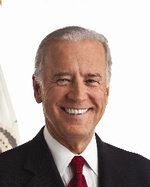 Wikimedia Joe Biden
Wikimedia Joe Biden Who is he? Biden is vice president and the foremost American advocate for aviator sunglasses and passenger rail.
Is he running? Biden hasn’t taken any visible steps toward building the organizing or fundraising infrastructure necessary for mounting a presidential run, but Maureen Dowd reported in The New York Times on August 2 that the vice president has been edging toward a campaign since the death of his son Beau in May.
Who wants him to run? The Wall Street Journal reports that both Beau Biden and his brother Hunter encouraged their father to run. The group Draft Biden (slogan: “I’m Ridin’ With Biden”) continues to do its best.
Can he win the nomination? Even with Clinton's recent struggles, it's hard to imagine Biden beating her in a primary. At 72, Biden would also be an unusually elderly candidate.
When will he announce? Biden will make a decision by early September, according to the Times.
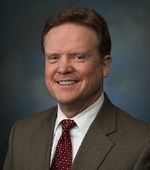 Wikimedia
Jim Webb
Wikimedia
Jim Webb
Who is he? Webb is a Vietnam War hero and secretary of the Navy. The author of several books, he served as a senator from Virginia from 2007 to 2013.
Is he running? Yes, as of July 2.
Who wants him to run? Dovish Democrats; socially conservative, economically populist Democrats; the Anybody-But-Hillary camp.
Can he win the nomination? Very doubtful. While Webb was the perfect candidate for Senate from Virginia in 2006, his statement in support of the Confederate flag shows why he probably has little hope in the national Democratic Party.
What else do we know? Read Webb’s longtime friend James Fallows on why he wants Webb in the race.
Does his website have a good 404 page? No.
 Wikimedia
Hillary Clinton
Wikimedia
Hillary Clinton
Who is she? As if we have to tell you, but: She’s a trained attorney; former secretary of State in the Obama administration; former senator from New York; and former first lady.
Is she running? Yes.
Who wants her to run? Most of the Democratic Party.
Can she win the nomination? A better question is whether she can lose it. Not yet!
What else do we know? The real puzzler, after so many years with Clinton on the national scene, is what we don't know. Here are 10 central questions to ask about the Hillary Clinton campaign.
Does her website have a good 404 page? If you’re tolerant of bad puns and ’90s ’80s outfits, the answer is yes.
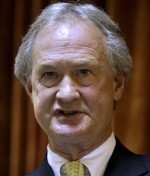 Steven Senne / AP
Lincoln Chafee
Steven Senne / AP
Lincoln Chafee
Who is he? The son of beloved Rhode Island politician John Chafee, Linc took his late father’s seat in the U.S. Senate, serving as a Republican. He was governor, first as an independent and then as a Democrat.
Is he running? Yes—he announced his run at George Mason University on June 3.
Who wants him to run? Beyond metric-system boosters? No one knows! Even in Rhode Island, Chafee doesn’t have much support—he opted not to seek re-election as governor in 2014, in part because his approval rating had reached a dismal 26 percent.
Can he win the nomination? No. Chafee seems to be positioning himself as an economic populist and says Clinton's 2002 vote for the Iraq war should disqualify her (he was the only Republican senator to vote against it). In other words: He's Jim Webb with a less impressive resume, a less compelling bio (he's the son of longtime Senator John Chafee), and less of a political base. He gives himself even odds, though.
Does his website have a good 404 page? No.
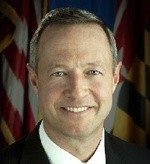 Wikimedia
Martin O'Malley
Wikimedia
Martin O'Malley
Who is he? He’s a former governor of Maryland and mayor of Baltimore.
Is he running? Yes. He announced his campaign on May 30.
Who wants him to run? Not clear. He has some of the leftism of Bernie Sanders or Elizabeth Warren, but without the same grassroots excitement.
Can he win the nomination? Probably not. At the moment, O’Malley seems caught between Sanders, who has grasped the progressive mantle, and Clinton, who dominates the Democratic race overall. As with Sanders, though, it’s hard to see where O'Malley would get an opening unless Clinton’s campaign fell apart. The conventional wisdom since protests over the death of Freddie Gray is that protests in Baltimore undermine the case for his candidacy and make it harder for him to run, but he’s embraced the protests as a motivation for his run.
What else do we know? Have you heard that he plays in a Celtic rock band? You have? Oh.
Does his website have a good 404 page? No.
 Wikimedia
Bernie Sanders
Wikimedia
Bernie Sanders
Who is he? A self-professed socialist, Sanders represented Vermont in the U.S. House from 1991 to 2007, when he won a seat in the Senate.
Is he running? Yes. He announced April 30.
Who wants him to run? Far-left Democrats; socialists; Brooklyn-accent aficionados.
Can he win the nomination? It remains extremely difficult to see him winning the nomination, on the basis that primary voters tend to gravitate to “electable” general-election candidates alone. But Sanders has improbably become a huge force in the Democratic Party, making questions about inequality and economics central to the campaign and tugging Hillary Clinton to the left.
Does his website have a good 404 page? Yes, and it is quintessentially Sanders.
 Wikimedia
Elizabeth Warren
Wikimedia
Elizabeth Warren
Who is she? Warren has taken an improbable path from Oklahoma, to Harvard Law School, to progressive heartthrob, to Massachusetts senator.
Is she running? No. Seriously, no.
Who wants her to run? Progressive Democrats; economic populists, disaffected Obamans, disaffected Bushites.
Can she win the nomination? No, because she's not running.
* * *
The Republicans Gage Skidmore
Gage Skidmore Jim Gilmore
Who is he? Right? Gilmore was governor of Virginia from 1998 to 2002. Before that, he chaired the Republican National Committee for a year. In 2008, he ran for Senate in Virginia and lost to Mark Warner by 31 points. Thirty-one!
Is he running? Yes. He filed his papers on July 29.
Who wants him to run? Who knows? Gilmore ran for president briefly during the 2008 cycle before switching to the Senate race. There’s not exactly a groundswell for him this time, either. He says he has experience with national security and the economy that other Republican candidates don’t, and if he’s talking about Trump, it’s hard to disagree.
Can he win? Nah.
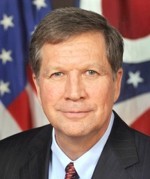 Wikimedia
Wikimedia John Kasich
Who is he? The current Ohio governor ran once before, in 2000, after a stint as Republican budget guru in the House. Between then and his election in 2010, he worked at Lehman Brothers. Molly Ball wrote a definitive profile in April.
Is he running? Yes: His announcement was July 21 at Ohio State University in Columbus.
Who wants him to run? Kasich’s pitch: He’s got better fiscal-conservative bona fides than any other candidate in the race, he’s proven he can win blue-collar voters, and he’s won twice in a crucial swing state. While his polling isn’t stellar, he still leads Graham, Fiorina, and Jindal.
Can he win the nomination? As Ball noted, Kasich seems in some ways perfectly suited to this race; in other ways, his insistent anti-charisma makes it very hard to imagine him winning, and his attitude is amusingly blasé: “If they like it, great. If they don’t like it, I’ll play more golf.” He could be hurt by his embrace of Medicaid expansion under Obamacare, a move he had to circumvent the Republican-led General Assembly to make.
Does his website have a good 404 page? Nope.
What else do we know? John Kasich bought a Roots CD and hated it so much he threw it out of his car window. (Littering is illegal, governor!) John Kasich hated the Coen brothers’ classic Fargo so much he tried to get his local Blockbuster to quit renting it. George Will laughed at him. John Kasich is the Bill Brasky of philistinism. John Kasich probably hated that skit, too.
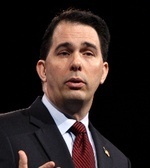 Gage Skidmore
Gage Skidmore Scott Walker
Who is he? Elected governor of Wisconsin in 2010, Walker earned conservative love and liberal hate for his anti-union policies. In 2013, he defeated a recall effort, and he won reelection the following year.
Is he running? Yes. He announced on July 13.
Who wants him to run? Walker's record as governor of Wisconsin excites many Republicans. He's got a solid résumé as a small-government conservative. His social-conservative credentials are also strong, but without the culture-warrior baggage that sometimes brings. And Walker has won three difficult elections in a blue-ish state. He’s said to be a favorite of the Koch brothers and their network.
Can he win the nomination? Very possibly. Despite his strengths, Walker has never run a national campaign and isn't exactly Mr. Personality. For now, he is solidly in the top tier of candidates.
Does his website have a good 404 page? Aye, matey.
What else do we know? Good news, bad news: Walker has a geographic advantage in his proximity to Iowa, but a potential biological disadvantage from his allergy to dogs.
 David Shankbone
David Shankbone Chris Christie
Who is he? What’s it to you, buddy? The combative New Jerseyan is in his second term as governor and previously served as a U.S. attorney.
Is he running? Christie kicked off his campaign June 30 at Livingston High School, his alma mater.
Who wants him to run? Moderate and establishment Republicans who don't like Bush or Romney; big businessmen, led by Home Depot founder Ken Langone.
Can he win the nomination? No. The tide of opinion had turned against Christie even before the "Bridgegate" indictments. Citing his horrific favorability numbers, FiveThirtyEight bluntly puns that “Christie's access lanes to the GOP nomination are closed.”
Does his website have a good 404 page? We would have gone with the GIF, but sure.
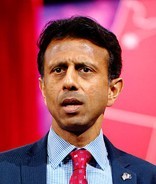 Gage Skidmore
Gage Skidmore Bobby Jindal
Who is he? A Rhodes Scholar, he’s the outgoing governor of Louisiana. He previously served in the U.S. House.
Is he running? Yes. He kicked off his campaign on June 24.
Who wants him to run? It’s hard to say. Jindal has assiduously courted conservative Christians, both with a powerful conversion story (he was raised Hindu but converted to Catholicism in high school) and policies (after other governors reversed course, he charged forward with a religious-freedom law). But he still trails other social conservatives like Ted Cruz and Mike Huckabee.
Can he win the nomination? Probably not. Jindal still lacks traction at the national level, he faces an overcrowded field of social conservatives, and his stewardship of the state of Louisiana has come in for harsh criticism even from staunch fiscal conservatives. It’s hard to see how he gains momentum from here.
What else do we know? In 1994, he wrote an article called “Physical Dimensions of Spiritual Warfare,” in which he described a friend’s apparent exorcism.
Does his website have a good 404 page? Meh. Good joke, but past its expiration date.
 Gage Skidmore
Gage Skidmore Donald Trump
Who is he? The real-estate developer and reality-TV star fired TV personality almost certainly isn’t worth as much as he wants you to think he is.
Is he running? Like, is he going to win the nomination? Of course not. But his wacky, offensive, ad-lib rise to the top of the Republican polls has been amazing.
Who wants him to run? Jon Stewart; Donald Trump. The rest of the Republican Party, however, seems horrified.
Can he win the nomination? When does this GIF stop seeming funny and accurate, and start seeming incorrect?

Not today! He’s still not gonna win.
What else do we know? He’s, like, a really smart person.
 Gage Skidmore
Gage Skidmore Jeb Bush
Who is he? The brother and son of presidents, he served two terms as governor of Florida, from 1999 to 2007.
Is he running? Yes, as of June 15.
Who wants him to run? Establishment Republicans; George W. Bush; major Wall Street donors.
Can he win the nomination? Bush is a top-tier candidate, but just how strong he is remains unclear. Since jumping into the race, he has continued to poll well and raise lots of money. He seems like a lock to rack up all-important endorsements from top Republicans. But predictions that he would quickly come to dominate the field have not come to pass, and while many analysts predicted that his moderate record would cause trouble in Iowa and with grassroots activists, that problem seems to be deeper than expected. His poll numbers are probably helped by his name, which is a double-edged sword.
What else do we know? Since Bush's surprise announcement, he has tended to stay fairly quiet, delivering some big speeches and hitting fundraisers, but not making a great number of trips to Iowa or New Hampshire.
Does his website have a good 404 page? Yes—y en español también.
 Gage Skidmore
Gage Skidmore Rick Perry
Who is he? George W. Bush’s successor as governor of Texas, he entered the 2012 race with high expectations, but sputtered out quickly. He left office in 2014 as the Lone Star State’s longest-serving governor.
Is he running? Yes. He announced on June 4.
Who wants him to run? Small-government conservatives; Texans; immigration hardliners; foreign-policy hawks. Noah Rothman makes a case here. (Perry's top backer four years ago, non-relative Bob Perry, died in 2013.)
Can he win the nomination? Perry and his backers insist 2016 Perry will be the straight shooter who oversaw the so-called Texas miracle, not the meandering, spacey Perry of 2012. We'll see. So far, his campaign has failed to catch on in polling, even as he wins acclaim as a drastically improved candidate.
Does his website have a good 404 page? That depends. Is this an “oops” joke? If so, yes.
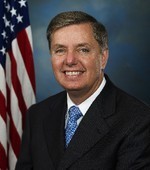 Wikimedia
Wikimedia Lindsey Graham
Who is he? A senator from South Carolina, he’s John McCain’s closest ally in the small caucus of Republicans who are moderate on many issues but very hawkish on foreign policy.
Is he running? He sure is. Graham kicked off the campaign June 1.
Who wants him to run? John McCain, naturally. Senator Kelly Ayotte, possibly. Joe Lieberman, maybe?
Can he win the nomination? Not really. The South Carolina senator seems to be running in large part to make sure there’s a credible, hawkish voice in the primary. It seems like Graham started his campaign almost as a lark but has started to enjoy the ride, plus he’s shown he’s a great performer on the stump. Molly Ball explores his chances at greater length here.
What else do we know? Graham promises to have a rotating first lady if he wins. We nominate Lana del Ray.
 Michael Vadon
Michael Vadon George Pataki
Who is he? Pataki ousted incumbent Mario Cuomo in 1994 and served three terms as governor of New York.
Is he running? Yes. He announced May 28.
Who wants him to run? It's not clear. Establishment Northeastern Republicans once held significant sway over the party, but those days have long since passed.
Can he win the nomination? No. As my colleague Russell Berman previously noted, Pataki is one of the longest of the long-shot GOP candidates. He has touted his leadership on 9/11, when he served as governor, but so did former New York City Mayor Rudy Giuliani. He was also a successful conservative governor in a deep-blue Northeastern state, but so was former Massachusetts Governor Mitt Romney. He seems to be socially liberal enough to alienate primary voters, but not enough to capture Democrats.
Does his website have a good 404 page? No.
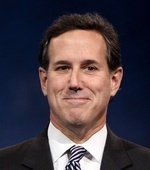 Gage Skidmore
Gage Skidmore Rick Santorum
Who is he? Santorum represented Pennsylvania in the Senate from 1995 until his defeat in 2006. He was the runner-up for the GOP nomination in 2012.
Is he running? Yes, with a formal announcement on May 27.
Who wants him to run? Social conservatives. The former Pennsylvania senator didn't have an obvious constituency in 2012, yet he still went a long way, and Foster Friess, who bankrolled much of Santorum's campaign then, is ready for another round.
Can he win the nomination? It's tough to imagine. Santorum himself said his chances would hinge on avoiding saying "crazy stuff that doesn't have anything to do with anything." For now, his poll numbers remain in the basement—but he surprised in 2012.
Does his website have a good 404 page? No.
 Gage Skidmore
Gage Skidmore Mike Huckabee
Who is he? An ordained preacher, former governor of Arkansas, and Fox News host, he ran a strong campaign in 2008, finishing third, but sat out 2012.
Is he running? Yes. He kicked off the campaign May 5.
Who wants him to run? Social conservatives; evangelical Christians.
Can he win the nomination? Huckabee's struggle will be to prove that he's still relevant. Since he last ran in 2008, a new breed of social conservatives has come in, and he'll have to compete with candidates like Ted Cruz. His brand of moral crusading feels a bit out of date in an era of widespread gay marriage—not least when he curiously chose to attack Beyoncé. (His statements in support of Josh Duggar have also earned him criticism and quizzical reaction.) He faces fire from strict anti-tax conservative groups for tax hikes while he was governor. And fundraising has always been his weak suit. But Huckabee's combination of affable demeanor and strong conservatism resonates with voters.
Does his website have a good 404 page? It’s pretty good.
 Gage Skidmore
Gage Skidmore Ben Carson
Who is he? A celebrated former head of pediatric neurosurgery at Johns Hopkins, Carson became a conservative folk hero after a broadside against Obamacare at the 2013 National Prayer Breakfast.
Is he running? Yes, after a May 4 announcement.
Who wants him to run? Grassroots conservatives, who have boosted him up near the top of polls, even as Republican insiders cringe. Carson has an incredibly appealing personal story—a voyage from poverty to pathbreaking neurosurgery—and none of the taint of politics.
Can he win the nomination? Almost certainly not. Carson's politics are conservative on some issues, but so eclectic as to be nearly incoherent overall. He's never run a political campaign, and has a tendency to do things like compare ISIS to the Founding Fathers. Despite initially building a formidable organization, he’s struggled to keep it together, with a rash of top staffers defecting.
Does his website have a good 404 page? No.
 Gage Skidmore
Gage Skidmore Carly Fiorina
Who is she? Fiorina rose through the ranks to become CEO of Hewlett-Packard from 1999 to 2005, before being ousted in an acrimonious struggle. She advised John McCain’s 2008 presidential campaign and unsuccessfully challenged Senator Barbara Boxer of California in 2010.
Is she running? Yes, as of a May 4 announcement.
Who wants her to run? It isn’t clear what Fiorina’s constituency is. She’s a former CEO of Hewlett-Packard, but there are other business-friendly candidates in the race, all of whom have more electoral experience.
Can she win the nomination? Almost certainly not. Fiorina’s only previously political experience was a failed Senate campaign against Barbara Boxer in 2010. She has mostly been serving the role of harasser in the race so far, stirring up the news with slams on environmentalists for causing droughts (your guess is as good as mine), Obama for backing net neutrality, and Apple’s Tim Cook for speaking out on Indiana’s Religious Freedom Restoration Act. Mainly, though, she has strongly criticized Hillary Clinton, and some Republican strategists like the optics of having a woman to criticize Clinton so as to sidestep charges of sexism. Fiorina seems to be wowing voters in Iowa, but that hasn’t translated into national support—yet.
What else do we know? Fiorina's 2010 Senate race produced two of the most entertaining and wacky political ads ever, "Demon Sheep" and the nearly eight-minute epic commonly known as "The Boxer Blimp."
Does her website have a good 404 page? No.
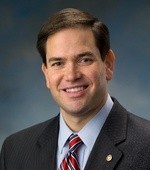 Wikimedia
Wikimedia Marco Rubio
Who is he? A second-generation Cuban-American and former speaker of the Florida House, Rubio was catapulted to national fame in the 2010 Senate election, after he unexpected upset Governor Charlie Crist to win the GOP nomination.
Is he running? Yes—he announced on April 13.
Who wants him to run? Rubio enjoys establishment support, and has sought to position himself as the candidate of an interventionist foreign policy.
Could he win the nomination? Charles Krauthammer pegs him as the Republican frontrunner. His best hope seems to be to emerge as a consensus candidate who can appeal to social conservatives and hawks, and he's even sounded some libertarian notes of late. He's well-liked by Republicans, and has surged forward since announcing, but he needs to move up from second choice to first choice for more of them. Rubio seems to scare Democrats more than any other candidate, too.
Does his website have a good 404 page? It’s decent.
 Wikimedia
Wikimedia Rand Paul
Who is he? An ophthalmologist and son of libertarian icon Ron Paul, he rode the 2010 Republican wave to the Senate, representing Kentucky.
Is he running? Yes, as of April 7.
Who wants him to run? Ron Paul fans; Tea Partiers; libertarians; civil libertarians; non-interventionist Republicans.
Can he win the nomination? At one time, Paul seemed like he might manage to break into the top tier despite being a radically unorthodox Republican. He's relatively permissive on drugs, passionate about civil liberties, and adamantly in favor of restraint on foreign policy. So far, however, his unusual candidacy isn’t taking off. Paul remains stuck in the rear-middle of the pack, he hasn’t picked up the big donors he hoped for, and his father’s backers remain wary of his overtures to the GOP establishment
What else do we know? One of Paul's greatest strengths is the base bequeathed to him by his father, three-time presidential candidate and former Representative Ron Paul. But as The Washington Post has reported, his father is also Senator Paul's biggest headache.
Does his website have a good 404 page? No.
 Wikimedia
Wikimedia Ted Cruz
Who is he? Cruz served as deputy assistant attorney general in the George W. Bush administration and was appointed Texas solicitor general in 2003. In 2012, he ran an insurgent campaign to beat a heavily favored establishment Republican for Senate.
Is he running? Yes. He launched his campaign March 23 at Liberty University in Virginia.
Who wants him to run? Hardcore conservatives; Tea Partiers who worry that Rand Paul is too dovish on foreign policy; social conservatives.
Can he win the nomination? Though his announcement gave Cruz both a monetary and visibility boost, he still carries serious weaknesses. Much of Cruz's appeal to his supporters—his outspoken stances and his willingness to thumb his nose at his own party—also imperil him in a primary or general election, and he's sometimes been is own worst enemy when it comes to strategy. But Cruz is familiar with running and winning as an underdog.
Does his website have a good 404 page? No.
 Gage Skidmore
Gage Skidmore Sarah Palin
Who is she? If you have to ask now, you must not have been around in 2008. That’s when John McCain selected the then-unknown Alaska governor as his running mate. After the ticket lost, she resigned her term early and became a television personality.
Is she running? A bizarre speech in January made a compelling case both ways.
Who wants her to run? Palin still has diehard grassroots fans, but there are fewer than ever.
Can she win the nomination? No.
When will she announce? It doesn't matter.
 Gage Skidmore
Gage Skidmore Mitt Romney
Who is he? The Republican nominee in 2012 was also governor of Massachusetts and a successful businessman.
Is he running? Nah. He announced in late January that he would step aside.
Who wanted him to run? Former staffers; prominent Mormons; Hillary Clinton's team. Romney polled well, but it's hard to tell what his base would have been. Republican voters weren't exactly ecstatic about him in 2012, and that was before he ran a listless, unsuccessful campaign. Party leaders and past donors were skeptical at best of a third try.
Could he have won the nomination? He proved the answer was yes, but it didn't seem likely to happen again.
 Gage Skidmore John Bolton
Gage Skidmore John Bolton Who is he? A strident critic of the UN and leading hawk, he was George W. Bush’s ambassador to the UN for 17 months.
Is he running? Nope. After announcing his announcement, in the style of the big-time candidates, he posted on Facebook that he wasn’t running.
Who wanted him to run? Even among super-hawks, he didn’t seem to be a popular pick, likely because he had no political experience.
Could he have won the nomination? They say anything is possible in politics, but this would test the rule. A likelier outcome could be a plum foreign-policy role in a hawkish GOP presidency.









True Detective Season Two: Everyone’s Fired

This week following True Detective, Spencer Kornhaber, Christopher Orr, and David Sims discuss the murders and machinations depicted in the HBO drama. (Sophie Gilbert is away.)
Orr: Well, thank goodness we all know that Lieutenant Burris shot Paul Woodrugh with a rubber bullet, right? I wonder what song Woodrugh will hear a country cover of during his pre-awakening dream sequence. I’m rooting for Johnny Cash’s version of U2’s “One.” (Seriously: This is what happens when you cheesily undo the death of a principal character, as True Detective did after episode two. It becomes hard for viewers to take any tragic turn too much to heart. It’s the exact opposite of the upping-of-emotional-stakes that takes place when you actually kill them.)
.true-detective h5 { background: #000; font-weight: normal; font-family: 'Proxima Nova'; text-align: center; font-size: 18px; text-transform: uppercase; margin: 0; } .true-detective h5 a { color: #fff; text-decoration: none; } .true-detective ul { text-align: center; list-style-type: none; margin: 0; padding: 10px; background-color: #ccc; } .true-detective .prev, .true-detective .next { background-color: #fff; padding: 10px; border-radius: 5px; text-transform: uppercase; font-family: Rajdhani; font-size: 12px; font-weight: bold; letter-spacing: 1px; box-sizing: border-box; width: 106px; width: calc(50% - 5px); float: left; } .true-detective .prev { margin-right: 10px; } .true-detective .next { float: right } .true-detective .prev a, .true-detective .next a { color: #EC1B23; text-transform: uppercase; font-family: Rajdhani; font-size: 12px; font-weight: bold; letter-spacing: 1px; } .true-detective .complete { background-color: #EC1B23; text-transform: uppercase; font-family: Rajdhani; font-size: 12px; font-weight: bold; letter-spacing: 1px; padding: 10px; margin-top: 45px; border-radius: 5px; } .true-detective .complete a { color: #fff; } @media (max-width: 700px) { #article .true-detective { padding-left: 130px; } #article .true-detective h4, .true-detective img { margin-left: -130px; } } Related True Detective: Season 2 < Previous Complete Series Coverage
True Detective: Season 2 < Previous Complete Series Coverage But let me rewind to a little earlier in that particular storyline to unpack the torrent of wildly implausible and thoroughly unnecessary narrative detail that was unleashed upon viewers tonight. Please correct me if I’m wrong, guys, but as I understood it:
Woodrugh was set up by his war (and bed) buddy, who hooked up with him “on orders” as part of a blackmail scheme by his old mercenary outfit, Black Mountain, which wanted to make sure that he “kept confidentiality” in light of the damaging (but never described) news stories that have been circulating about the company. But coincidentally, Black Mountain has now re-branded as Ares Security, a company whose only client is the Catalyst Group, which has been up to its eyeballs in the crooked land deals and sex parties Woodrugh has spent the whole season investigating. Still more coincidentally, Teague Dixon, Ray Velcoro’s erstwhile partner and a halfhearted task force member, was tailing Woodrugh for his own, individual blackmail scheme and photographed him with said old war buddy. After Dixon died during the episode four bloodbath, Police Chief Holloway, by yet another “happy coincidence,” found the photos Dixon had taken of Woodrugh. Still later, Holloway and assorted Catalyst Group muckety-mucks were at the sex party from which Woodrugh and Velcoro stole the land deal contracts. So now Holloway shows up with Ares Security (again, formerly Black Mountain; sole current client: Catalyst) to use the photos to make Woodrugh return the contracts.
I struggle to think of any time I’ve witnessed a more remarkably compressed presentation of convoluted (and completely uninteresting) plot details on the big screen or the small. But sadly it was all too characteristic of tonight’s show, which should have been titled “The Episode of Infinite Exposition.” Almost as dense as that last scene was another in which our three principals accomplished more police work in two minutes than they had in the previous five episodes, solving the ’92 diamond heist and their own setup at the shootout, while name-dropping secondary and tertiary characters at machine-gun pace: Holloway, Burris, Dixon, Caspere, Chessani, Amarilla, Tascha ... About the only chance I had to catch my breath was when Ani was mispronouncing “fiefdom.”
Then there was the scene in which Ani showed Ray the photo with the woman Vera had identified as “Laura.” Ray corrected her: It was Erica, Caspere’s former secretary, whom we met briefly a couple times early on. (What’s less significant than a tertiary character? A quaternary one?) But wait! Woodrugh had already very awkwardly snuck in the information that one of the orphans from the ’92 robbery had been named Laura. Two Lauras, across the span of 25 years, in the Southern half of California—it can’t be a coincidence, can it? Ray and Ani seem to think not, and I wish I doubted their assessment of show creator Nick Pizzolatto’s plotwork this season. At this point, I’d put Laura/Erica at even odds to be the crotch-blasting, eyeball-burning, bird-headed assassin that the show has basically forgotten all about since episode three.
Two Lauras, across the span of 25 years, in the Southern half of California—it can’t be a coincidence, can it?This is what happens when you devote two-thirds of a season to scene after scene after scene of Frank and Jordan’s Baby Problems, and Frank Shaking Guys Down, and Look How Fucked Up Ray and Ani Are, and Melancholy Singer in the Dive Bar Yet Again—and then you suddenly realize that with only a couple episodes left you haven’t offered even a rudimentary outline of the central plot. At this rate, I half expect next week’s finale to consist exclusively of a flow chart explaining the innumerable interconnections between Caspere, Chessani (pere and fils), Holloway, Burris, Osip Agranov, the Catalyst Group’s Jacob McCandless, Attorney General Geldof, Dr. Pitlor, and whatever other largely interchangeable baddies I’m forgetting. (Interchangeable, that is, except for Pitlor and the elder Chessani, who I think should get their own HBO show together. Did you notice the wicked irony with which the latter told a blonde in the bar that his family was a political dynasty, “like the Kennedys,” just seconds before asking her to “hum my balls a little.”)
Amid tonight’s incessant exposition, I had only a few other observations to share before passing on the torch (I should note here that usual round-tabler Sophie Gilbert is out of the country this week, and David Sims will be filling her mighty shoes):
1) The show’s title is a reference back to the long-lived pulp magazine True Detective, and from the start the series was intended as a kind of smart, ironic take on the genre. (In this, it’s not unlike Shane Black’s great 2006 movie Kiss Kiss Bang Bang, which resurrected Robert Downey Jr.’s career. But rather than opt for satire, Pizzolatto emphasized the mythological and grotesque.) Over the course of this second season, however, True Detective has seemed more and more like the tossed-off, seat-of-the-pants pulp that inspired its title. (Or, worse, a serial novel: The killer was that nameless receptionist from chapter two!) The self-seriousness of the show and its increasingly disappointing literary ambitions do it no favors here.
2) On a related note, after an unusually good episode last week, Frank got stuck back in his gangster-with-a-thesaurus box tonight. He had his moments, especially as a silent, safe-emptying arsonist. (If she were here, Sophie would note, correctly, that the show is at its best when everyone stops talking.) But some of the dialogue Frank was saddled with tonight would exceed the capacities of any actor, living or dead: “I figured I’d drill a new orifice and fuck myself for a change”; “Please…articulate…the percentage you would require…to transact with me” (this line felt as though it had been Google-translated to Farsi and back more than once); “Guy’s been around the last three months less than my wife’s period.” I wish you well in your bid for dramatic respect, Vince Vaughn. But you’ve chosen the wrong muse in Pizzolatto.
3) Last week, I noted that the Big Rescue of Vera from the sex party was based on essentially no evidence that she wanted to be rescued, apart from her failure to return her sister’s phone calls. I really liked that the show ran with this idea tonight, but I fear that it’ll be yet another example—like last week’s terrific slow-reveal of the truth about Ray’s vigilante murder of his wife’s presumed attacker—that ultimately doesn’t really go anywhere.
4) So obviously it wasn’t Vera (narratively peripheral, but given considerable moral weight) who was torture-murdered in the shed in the woods. Instead we learn that it was Tascha, who was narratively peripheral and morally weightless. This is an appalling devaluation of the gory-ritualistic-murder coin. Last season, there was an entire mythology undergirding such atrocities. This season, it feels shamelessly and incoherently wedged in: Why would powerful, secular sex-partiers deal with a snitch this way? My best guess—and only a guess—is that the cabin is a remnant of the “secret occult history of the U.S. transportation system” storyline that Pizzolatto abandoned in the process of writing the season. In any case, it doesn’t fit at all.
Note: I sincerely doubt that motel offers room service.5) I’ll leave this mostly to you guys to discuss if you like, but let me offer a moderate yuck for the Ani-Ray hookup. No, it’s not nearly as gross as it would have been if he’d acceded to her Molly-fueled tackle early in the episode. But it’s still a scene I think the show hasn’t earned, especially with the two of them spending most of the evening dutifully explicating plot points.
6) Despite my overall negative assessment of tonight’s episode, I will offer one unqualifiedly positive take. When Frank, describing Tony Chessani to Ray, said, “The kid’s a twist,” this was a clear reference to the Coens’ Miller’s Crossing—and anyone familiar with my feelings for that film will know just how happy this made me. (To any skeptical of the reference, I cite the show’s equally obvious shout-out to Blood Simple back in episode one.)
There’s a lot I left undiscussed here: Frank’s brutalization of Blake; Woodrugh’s crazy, but apparently successful, idea to stick his girlfriend in a motel room with his wildly jealous mom (note: I sincerely doubt that motel offers room service); the discovery that Ani’s dad does not seem to be a psychosexual co-conspirator; etc.
I’m also guessing that the ending means that we’ll never learn exactly what horror befell Woodrugh in “the desert,” let alone the provenance of the extensive burns that pre-dated his military service. Nah, I’m kidding. He’s obviously still alive. Right?
Kornhaber: Oh, Chris, how can you joke at a time like this? A dastardly villain just murdered an all-American hero! Think of the many boys and girls who’d bought Officer Woodrugh action figures capable of the exact same emotional range Taylor Kitsch has shown this season! Think of all the wonderful moments we’ve spent watching this troubled but noble war veteran doing things that amused us, intrigued us, and built our investment in his success! As with the Starks and Seattle Grace Hospital surgeons to fall before him, TV Land mourns.
Kidding, kidding. Unfortunately, the only emotion I felt decisively upon Woodrugh’s demise was admiration for the camerawork that made Burris seem like a jungle cat silently moving in on prey. Look, TV shows don’t need to make you unequivocally “root” for their characters, but the craven, vindictive, and cold Woodrugh stands as a great example of a protagonist-in-name-only; until he died, I hadn’t realized just how little interest I had in his survival. When the show cut to Emily crying at Splendor in the Grass, I did feel sad for the two women and one unborn child he had stashed away in that motel. But my sympathy for them is also antipathy toward Paul—he died less to stop an injustice than to cover up a same-sex tryst whose existence would have shocked no one in his life.
Okay—beyond noting how difficult it is and will be for True Detective to produce moments of true emotional power after alternately numbing and annoying the audience for seven weeks, I’m going to try to not carp too much today. Despite the many “huh, what?” moments you’ve so accurately chronicled, Chris, for me this was the most consistently engaging hour of True Detective Season Two because, well, things happened. The story moved. Dots were connected.
In fact, so many dots were connected that it feels like Pizzolatto is overcorrecting in response to complaints that Season One kept its character backstories entirely separate from its murder mystery. As Vinci Confidential nears its end, it has started stitching its many threads into one big, gnarly dreamcatcher. Woodrugh’s romantic and professional associates reemerged in the Catalyst security force; Ani’s family provided intel and her partner helped protect them to make up for his complicity in her harassment proceedings; Ray’s troubles with his son and ex-wife have allowed him to consider leaving the country, and his framed-rapist saga has turned out to be a result of Blake’s criminal entrepreneurship; Frank’s many scenes of shakedowns are starting to pay off as he puts together a getaway/revenge plan. Most of this is not plausible, little of it is easy to follow, but all of it is is kind of fun to watch come together.
As Vinci Confidential nears its end, it has started stitching its many threads into one big, gnarly dreamcatcher.The most notable connection moment, or perhaps just the most horrifying, was the one between Ani and Ray. Shall we count the layers of awkwardness and trollish gender politics here from screenwriter and characters alike? First, there’s the fact that Ani threw herself at her partner right after surviving a prostitution party that made her flash back to her own sexual abuse, as if the combination of drugs and stimulation and sadness at the hands of men were too much to handle without comfort from… another man. Then there’s the fact the season’s main female character has now hooked up with just about every eligible cop she’s spent time with (well, not poor flatulent Dixon), even as she continues to be judgmental towards other women’s sexual activity. And finally, what ultimately brings Bezzerides and Velcoro together is bonding over sexual assault (Ani’s own, Ray’s wife’s), in yet another example of Pizzolatto believing trauma to be the only determinative thing about anyone’s personality or relationships.
But you know what? This might be the first time this season that we’ve seen two people do something simply because they wanted to and it because it made them feel good. If they end up on the same plane to Latin America as Frank and Jordan do in the next episode, all setting out to find a new life far away from Vinci, well, there are worse endings imaginable.
The other notable thing about the detectives’ spitswapping is that it checked off one of the last remaining paperback-romp tropes that this season hadn’t yet tackled. Chris, unlike you I’m still not convinced that True Detective isn’t going for satire (overproduced, tonally bizarre satire). There were moments this hour where the show seemed thrilled to be nonsensically cool, like a child giddily making up a story while playing with toy guns. I mean, the unveiling of secret tunnels under Vinci? The slow-mo glass bashing of Blake’s face? Not one but two sequences of Frank finding creative ways to light his casino on fire? His hilariously redundant shopping list? The emoji-laden blackmail text message to Paul? (Less cool, but definitely, um, striking: usurious Hasids and the revelation that the greedy gang boss is Jewish?) Let’s hope for everyone involved that most of this stuff was done with a wink. At the very least, let’s revel in the fact that none of it was boring.
David, I’m eager to hear a fresh perspective on this show. Or maybe you’re in the same mindset that this roundtable has been all season, a mindset that Ani’s dad nicely summarized tonight—“goddamn everything.”
Sims: Well, I’ll say this, Spencer. Last night’s was the first episode that suggested an actually exciting plot direction for the future. Unfortunately, I think it was intended as a joke—Jordan proposing running away with Frank from their life of middle-management crime, and Frank responding, “Do you see me managing an Applebee's?” “I worked at one once,” Jordan says. “They give you a shift meal.”
I’m sold. A spinoff where Frank chokes out waiters and wars with rival fast-food joints sounds a good deal more entertaining than the various plot crescendos we suffered through in “Black Maps and Hotel Rooms.” Just don’t let him near the gas taps.
I’m noticing some muted praise for this episode simply because it finally advanced the plot after six weeks of meandering, but before reading Chris’s explanation of what was going on with Woodrugh in those shadowy tunnels, I really couldn’t have told you much about what happened and why. The appearance of Lieutenant Burris (James Frain) as Woodrugh’s assassin wasn’t too much of a shock, but mostly because I figured Frain had to pop up again since even Nic Pizzolatto wouldn’t waste a character actor that strong on a background role. I’ve tapped Burris as the chief Birdman suspect from the beginning, but whether I’m proved right or not, it’s hard to know how that revelation could have much impact on the viewer. Unlike last season’s “Spaghetti Man,” there’s no villain here (real or imaginary) who carries any supernatural weight. When our heroes finally started connecting the dots of this conspiracy, the only thing I really learned is that I should have been paying attention to everyone’s last names.
In another world, this could be the TV episode of the year—our heroes locked in a motel room unfolding the dense mystery and their brewing attraction to each other.Honestly—I wish Ani could have held up an actor’s headshot every time Ray mentioned someone just so I could keep track of which shadowy bureaucrat or gangster they were name-checking. In between True Detective’s first and second seasons, Pizzolatto seems to have forgotten that a conspiracy isn’t an inherently interesting thing. So Vinci’s public officials, private military contractors, Russian mobsters and, uh, the Mayor’s son are all involved in some cosmic criminal boondoggle involving stolen diamonds and the ’92 L.A. Riots and missing people and who knows what else. But to what end? They want to cash in on land parcels and push our anti-heroic crime boss out of power? Who cares? The lack of personal motivation was underlined by Vera’s complete disinterest in being rescued from last week’s orgy. Pizzolatto has been so concerned with making each of his characters so flawed and self-involved, there’s barely a hint of heroism to the whole enterprise. Whether those land parcels get sold or not, the world will spin on, undeterred.
Perhaps that’s why “Black Maps and Motel Rooms” decided to advance Ani and Ray’s romantic entanglement, which until now had lain very, very dormant. I’ll admit I was more invested in their traumatic union than I was in Woodrugh’s demise (talk about an unlikable protagonist), but only because I think Colin Farrell and Rachel McAdams have consistently tried their damnedest to throw some sparks off of every gnarled, overwrought piece of dialogue they’re handed. In another world, this could be the TV episode of the year—a turbo-charged bottle episode, with our heroes locked in a motel room unfolding the dense mystery and their brewing attraction to each other. Instead, Ani and Ray’s union felt as forced as all of the expositional dialogue they were spewing—it’s the seventh episode of eight, so time to wrap everything up, right?
I’ll give a little more credit to Ani’s confrontation with her father, not because of the similarly stilted dialogue (“Goddamn everything” indeed) but because McAdams and David Morse really did try to sell their conversation as an emotional breakthrough. While I’m not invested in the core conspiracy, I do like the leads enough to hope for some personal development, and I’m warmed by these little moments (such as Ray watching Friends with his son last week, as absurd as it sounds). It was beyond too late for Woodrugh, and the other stars might be headed for a similarly bleak fate in next week’s finale, but at least Ani got a vague admission of guilt and regret from her father rather than some garbage about auras. Season two of True Detective mostly feels like a lost cause—whatever Osip, Burris, and the rest of them are up to, I can’t imagine a plot twist seismic enough to reel me back into this sprawling conspiracy. But maybe there’s room for a few more personal triumphs in next week’s feature-length finale. Maybe Frank will finally buy that Applebee’s franchise.









Is Anywhere on Earth Safe From Climate Change?

Put simply: Climate change poses the threat of global catastrophe. The planet isn’t just getting hotter, it’s destabilizing. Entire ecosystems are at risk. The future of humanity is at stake.
Scientists warn that extreme weather will get worse and huge swaths of coastal cities will be submerged by ever-more-acidic oceans. All of which raises a question: If climate change continues at this pace, is anywhere going to be safe?
“Switzerland would be a good guess,” said James Hansen, the director of climate science at Columbia University’s Earth Institute. Hansen’s latest climate study warns that climate change is actually happening faster than computer models previously predicted. He and more than a dozen co-authors found that sea levels could rise at least 10 feet in the next 50 years. Slate points out that although the study isn’t yet peer-reviewed, Hansen is “known for being alarmist and also right.”
Related Story
Martin O’Malley’s Link Between Climate Change and ISIS Isn’t Crazy
Okay, so. Switzerland might be a desirable place to live—certainly in general, but also as a way to avoid the effects of climate change—for a few reasons: It’s landlocked, which means it’s buffered from rising sea levels. And officials in Switzerland appear to be taking climate-related threats seriously—which is not the case in much of the rest of the world. The country was the first to submit a contribution to the international climate agreement, promising to reduce its greenhouse-gas emissions by 50 percent by 2030 compared with 1990 levels. (In the United States, for comparison, President Barack Obama’s new energy plan would require a 32-percent cut in carbon emissions by 2030 compared with 2005 levels.) But that doesn’t mean Switzerland is impervious to the effects of climate change. Warmer temperatures mean more melting snow—Switzerland has lots of it—which means higher risks of flooding and rockslides.
Similarly, in Denver, Colorado, a landlocked city that might seem appealing because of its mile-high protection from rising seawaters, scientists warn that climate change could exacerbate droughts and harm water quality. “Water quality is sensitive both to increased water temperatures and changes in patterns of precipitation,” according to a Colorado Water Conservation Board report. “For example, changes in the timing and hydrograph may affect sediment load and pollution, impacting human health.” Scientists believe heat waves and wildfires in the state will also become more severe and more frequent, according to a Climate Change Vulnerability Study published earlier this year.
Staying away from scorching heat, hurricanes, floods, and wildfire will be difficult in a country that feels dramatically different in coming decades. “The best place really is Alaska,” said Camilo Mora, a geologist at the University of Hawaii, in an interview with The New York Times last year. Mora is the author of a 2013 paper published in Nature that predicts startlingly high temperatures by today’s standards—the hottest on record for any given place—will be normal by 2047. Monthly temperature averages will be hotter than anything on the books, according to Mora’s research. “Alaska is going to be the next Florida by the end of the century,” he said.
When considering climate-related vulnerabilities, economic stability may be as important as environmental factors.
“So, it may be too glib an answer, but the safest place to be for climate change just may be a place where a strong, diversified economy and responsive institutions give the ability and the will to deal with challenges as they arise,” said Richard Alley, a climate science professor at Pennsylvania State University. For example, California has remained fairly resilient despite experiencing brutal drought and devastating wildfires. “California’s economy continues to roll ahead,” he said.
“The scholarship is very strong that the optimal path for dealing with climate change involves both slowing human causes of climate change and adapting to the changes that will occur on the way, while avoiding both panic and stasis,” Alley told me.
The key to safety, then, isn’t to escape—relocation to another world isn’t exactly an option—but to deal with and prepare for the reality of what’s happening. It isn’t pretty. In fact, it’s arguably “apocalyptic,” Hansen wrote in The New York Times in 2012, imploring political leadership for urgent action on climate change.
“Global warming isn’t a prediction,” he said. “It is happening.”









The Long GOP Fight to Defund Planned Parenthood

Republican calls to defund Planned Parenthood over its handling of fetal tissue for research are louder than ever. But they form just the latest episode in a decades-long drive to halt federal support for the group.
This round of attacks aims squarely at the collection of fetal tissue, an issue that had been mostly settled—with broad bipartisan support—in the early 1990s. Among those who voted to allow federal funding for fetal tissue research was Senator Mitch McConnell, now the majority leader.
McConnell made no mention of his previous position on the issue when he announced that the Senate would take up a bill to cut off Planned Parenthood’s access to federal funds before leaving for its summer break. The first vote on the bill is expected as soon as Monday.
Related Story
The Bizarre Celebration of 'Unplanned Parenthood'
Videos shot by members of an anti-abortion group posing as fetal-tissue middlemen “absolutely shock the conscience,” said McConnell at a news conference. Those videos are being presented as evidence of Planned Parenthood officials discussing the sale of tissue from aborted fetuses in strikingly casual terms. It is illegal to profit from the sale of fetal tissue, though not illegal for expenses involved in its collection to be reimbursed.
Planned Parenthood says the videos are heavily edited and take discussions out of context.
“These videos are hard for anyone to defend and hit at the moral fabric of our society,” said the bill’s lead sponsor, Senator Joni Ernst. “Planned Parenthood is harvesting the body parts of unborn babies.”
Ernst’s bill would not only make Planned Parenthood ineligible for federal grant programs, like the federal family planning program, but also ban it from receiving reimbursement from Medicaid for other health services it performs for eligible men and women, such as testing and treatment for sexually transmitted diseases. According to the group’s most recent annual report, 41 percent of the $1.3 billion received by the national group and its affiliates came from government sources. Under a series of different laws including the Hyde amendment, none of the federal funds can be used for abortions, which accounted for 3 percent of services Planned Parenthood provides.
Yet even though abortion is a small part of what Planned Parenthood does, the group’s enormous size makes it the nation’s largest single provider of the procedure.
Dawn Laguens, the executive vice president of Planned Parenthood, says efforts to defund the group are, in fact, all about abortion. “They don’t care about fetal-tissue research,” she said. “It is just an angle to go after safe, legal abortion.”
But David Daleiden, the 26-year-old head of the group that took the videos, put the focus back on fetal-tissue research. “The goal of our investigation is to reveal the truth about Planned Parenthood’s trafficking and sale of aborted baby body parts for profit,” he said, in a statement, “which is illegal and unethical. Taxpayers should not be paying for these atrocities against humanity.”
But while the tie to fetal tissue is new, the fight to separate Planned Parenthood from its federal funding is, in fact, older than Daleiden himself.
In 1982, the Reagan administration issued the so-called squeal rule. It sought to require family-planning providers, including Planned Parenthood, to notify parents when providing contraceptives to minors, or else lose their funding. Planned Parenthood sued and won in federal court, where the rule was found to be a violation of patient privacy.
In 1987, the Reagan administration issued what came to be known as the “gag rule,” which barred recipients of federal family-planning funds from counseling or referring patients for abortion, and which required both physical and financial separation between contraceptive and abortion services.
Planned Parenthood (and others) sued again, and the case eventually went to the Supreme Court. This time the government won, but the rules remained mired in lower courts and were never fully implemented. President Bill Clinton erased them on his first day in office in 1993 by executive order.
This is also ironic because there has been a fairly broad bipartisan consensus in favor of using tissue from aborted fetuses in research for many years.Planned Parenthood was back on the hot seat in the 2000s, as new “direct action” groups decided to take the fight in a different direction.
In 2011, the anti-abortion group Live Action released a series of videos charging that Planned Parenthood was failing to act in apparent cases of sexual abuse leading to abortions on minors. Republicans in the House helped use those videos (which were later found to have been edited to make them misleading) to pass an amendment to defund Planned Parenthood. The Democratic-led Senate never acted on the measure.
But even those inclined to support Planned Parenthood say that the allegations around the sale of fetal tissue may represent a turning point. “The imagery is terrible,” said Alta Charo, a professor of law and bioethics at the University of Wisconsin. This is also ironic, she says, because there has been a fairly broad bipartisan consensus in favor of using tissue from aborted fetuses in research for many years.
A panel appointed during the Reagan administration in 1988 voted overwhelmingly that such research was ethical. “They went through all of the arguments, like ‘Does it make you complicit and evil if you take advantage of what had been a legally aborted fetus and you think that abortion was evil?’ And the answer was, ‘Well no, because we have transplants of organs of homicide victims all the time,’” Charo said. “So even if you call it a homicide, we take advantage of it.”
Meanwhile, groups looking for possible cures for devastating diseases, and seeing potential breakthroughs in other countries, urged Congress to cancel a funding ban on fetal-tissue research imposed by Reagan and continued under President George H. W. Bush.
That support was demonstrated in a bill to update programs at the National Institutes of Health. Among the Republicans who joined the overwhelming support for the measure in 1992 were not only McConnell, but also Chuck Grassley and John McCain.
Bush vetoed that bill, as promised, and while the Senate voted almost as overwhelmingly to override the veto, the House fell 10 votes short of the two-thirds majority needed. President Bill Clinton overturned the ban by executive order in 1993, and federal funding for fetal-tissue research was formally authorized in a similar NIH bill passed later that year.
This post appears courtesy of Kaiser Health News.









Atlantic Monthly Contributors's Blog
- Atlantic Monthly Contributors's profile
- 1 follower



